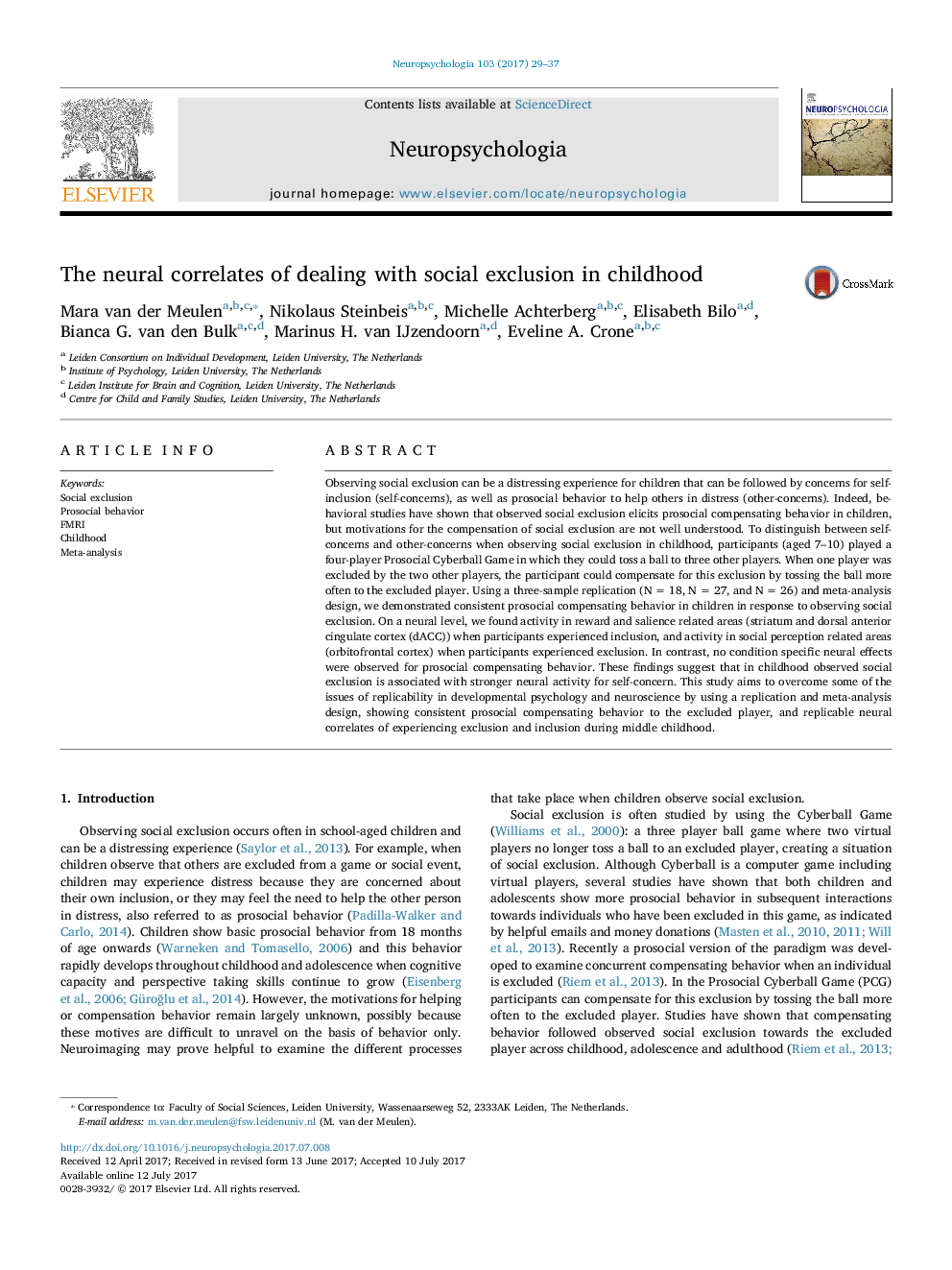ترجمه فارسی عنوان مقاله
همبستگی عصبی در برخورد با جدایی اجتماعی در دوران کودکی
عنوان انگلیسی
The neural correlates of dealing with social exclusion in childhood
| کد مقاله | سال انتشار | تعداد صفحات مقاله انگلیسی |
|---|---|---|
| 115942 | 2017 | 9 صفحه PDF |
منبع

Publisher : Elsevier - Science Direct (الزویر - ساینس دایرکت)
Journal : Neuropsychologia, Volume 103, August 2017, Pages 29-37

